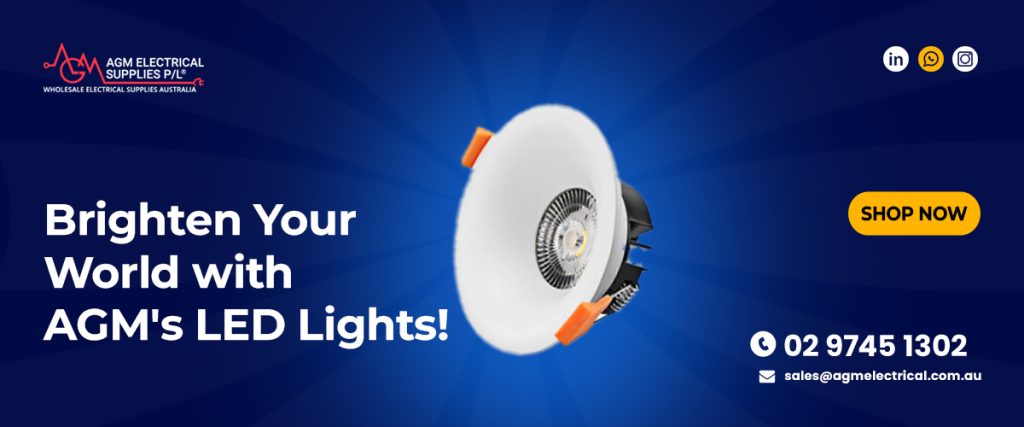Understanding LED Lights: A Comprehensive Guide

LED lights, short for Light Emitting Diode lights, have transformed the lighting industry. Their energy efficiency, long lifespan, and versatility make them a preferred choice for various applications. This guide explores the benefits, types, and applications of LED lights, highlighting why they are anessential modern lighting solutions.
Benefits of LED Lights
- Energy Efficiency
One of the most significant advantages of LED lights is their energy efficiency. LED lights consume significantly less power than traditional incandescent and fluorescent bulbs. This reduction in energy consumption not only lowers electricity bills but also contributes to environmental sustainability by reducing carbon footprint.
- Long Lifespan
LED lights boast an impressive lifespan, often lasting up to 25,000 to 50,000 hours. This longevity surpasses that of conventional bulbs, reducing the need for frequent replacements. The extended lifespan of LED lights translates into lower maintenance costs and less waste, further enhancing their environmental benefits.
- Durability and Reliability
Constructed from robust materials, LED lights are more durable than their traditional counterparts. They are resistant to shocks, vibrations, and external impacts, making them ideal for various environments, including outdoor and industrial settings. Their reliability ensures consistent performance, even under challenging conditions.
- Versatility in Design
LED lights come in various shapes, sizes, and colors, offering unmatched versatility in design. Whether for residential, commercial, or industrial use, there is an LED solution to meet every lighting need. This flexibility allows for creative lighting designs and applications, enhancing the aesthetic appeal of spaces.
- Instant Lighting and Dimming Capabilities
Unlike traditional bulbs that take time to reach full brightness, LED lights provide instant illumination. This feature is particularly beneficial in applications requiring immediate lighting, such as motion-sensor lights. Additionally, LED lights can be easily dimmed, offering greater control over lighting levels and ambiance.
Types of LED Lights
- LED Bulbs
LED bulbs are the most common type of LED lights, designed to replace traditional incandescent and compact fluorescent bulbs. They come in various shapes and bases, making them compatible with existing fixtures. LED bulbs are used in residential, commercial, and industrial settings, offering energy-efficient lighting solutions for diverse applications.
- LED Tubes
LED tubes are designed to replace fluorescent tubes in commercial and industrial environments. They offer better energy efficiency, longer lifespan, and improved light quality. LED tubes are commonly used in offices, warehouses, and retail spaces, providing bright and uniform illumination.
- LED Panels
LED panels are thin, flat fixtures that offer a sleek and modern lighting solution. They are often used in commercial settings, such as offices and conference rooms, providing even and glare-free illumination. LED panels come in various sizes and can be recessed or surface-mounted, making them versatile for different ceiling types.
- LED Strip Lights
LED strip lights consist of flexible circuit boards with surface-mounted LEDs, allowing for versatile and creative lighting applications. They are commonly used for accent lighting, under-cabinet lighting, and decorative purposes. LED strip lights can be cut to length, bent, and adhered to various surfaces, offering endless design possibilities.
- LED Flood Lights
LED flood lights are powerful lighting fixtures used for outdoor and security lighting. They provide broad and intense illumination, making them ideal for illuminating large areas, such as parking lots, stadiums, and building exteriors. LED flood lights are energy-efficient and durable, withstanding harsh weather conditions.
- LED Downlights
LED downlights, also known as recessed lights, are installed into the ceiling, providing a clean and unobtrusive lighting solution. They are commonly used in residential and commercial spaces for general and accent lighting. LED downlights offer various beam angles and color temperatures, allowing for customizable lighting designs.
Applications of LED Lights
- Residential Lighting
In residential settings, LED lights are used for various purposes, including general lighting, task lighting, and accent lighting. LED bulbs and downlights are commonly installed in living rooms, kitchens, and bedrooms, providing energy-efficient and aesthetically pleasing illumination. LED strip lights are often used for under-cabinet lighting, enhancing both functionality and ambiance.
- Commercial Lighting
Commercial spaces benefit significantly from LED lighting solutions due to their energy efficiency and long lifespan. Offices, retail stores, and hospitality establishments use LED panels, downlights, and tubes to create well-lit and inviting environments. LED lights also help reduce operational costs and support sustainability initiatives.
- Industrial Lighting
In industrial settings, LED lights provide reliable and efficient lighting for manufacturing plants, warehouses, and workshops. LED high bay lights and flood lights ensure adequate illumination, enhancing productivity and safety. The durability of LED lights makes them suitable for harsh industrial environments, where traditional lighting solutions may fail.
- Outdoor Lighting
LED lights are ideal for outdoor applications due to their durability and weather resistance. Streetlights, landscape lighting, and security lights often use LED technology to provide bright and reliable illumination. LED flood lights and strip lights are also popular for architectural lighting, highlighting the features of buildings and outdoor spaces.
FAQs about LED Lights
- What are LED lights?
LED lights, or Light Emitting Diode lights, are energy-efficient lighting solutions that provide bright and reliable illumination. They are used in various applications, including residential, commercial, industrial, and outdoor settings.
- How do LED lights save energy?
LED lights consume significantly less power than traditional incandescent and fluorescent bulbs, leading to lower electricity bills and reduced energy consumption. This efficiency contributes to environmental sustainability by decreasing carbon footprint.
- How long do LED lights last?
LED lights typically last between 25,000 to 50,000 hours, much longer than conventional bulbs. This extended lifespan reduces the need for frequent replacements, lowering maintenance costs and waste.
- Are LED lights environmentally friendly?
Yes, LED lights are environmentally friendly. They consume less energy, have a longer lifespan, and do not contain hazardous materials like mercury. Their reduced energy consumption and longer lifespan contribute to a lower carbon footprint and less waste.
- Can LED lights be used outdoors?
Yes, LED lights are suitable for outdoor use. They are durable and weather-resistant, making them ideal for applications such as streetlights, landscape lighting, and security lights. LED flood lights and strip lights are commonly used for outdoor lighting due to their robustness and efficiency.
- Are LED lights dimmable?
Many LED lights are dimmable, allowing users to adjust the brightness according to their preferences and needs. This feature offers greater control over lighting levels and ambiance, enhancing the functionality of LED lighting solutions.
- What are the different types of LED lights?
There are various types of LED lights, including LED bulbs, tubes, panels, strip lights, flood lights, and downlights. Each type offers unique benefits and applications, providing versatile and energy-efficient lighting solutions for different environments.
- Why are LED lights considered reliable?
LED lights are made from robust materials, making them resistant to shocks, vibrations, and external impacts. This durability ensures consistent performance, even under challenging conditions, making LED lights a reliable lighting solution for various applications.
- How are LED lights used in commercial spaces?
In commercial settings, LED lights are used for general, task, and accent lighting. Offices, retail stores, and hospitality establishments use LED panels, downlights, and tubes to create well-lit and inviting environments. LED lighting solutions help reduce operational costs and support sustainability initiatives in commercial spaces.
- Can LED lights improve energy efficiency in industrial settings?
Yes, LED lights are highly effective in industrial settings. They provide reliable and efficient lighting for manufacturing plants, warehouses, and workshops. LED high bay lights and flood lights ensure adequate illumination, enhancing productivity and safety while reducing energy consumption and maintenance costs.
Conclusion
Electrical Wholesalers LED lights have revolutionized the lighting industry with their energy efficiency, long lifespan, and versatility. They offer numerous benefits over traditional lighting solutions, making them a preferred choice for residential, commercial, industrial, and outdoor applications. As technology advances and the focus on sustainability intensifies, the future of LED lighting looks bright, promising even greater efficiency, functionality, and environmental benefits. Whether you are looking to reduce energy costs, enhance lighting quality, or contribute to environmental sustainability, LED lights are an excellent choice for all your lighting needs.




